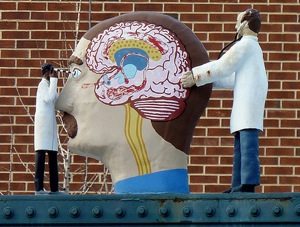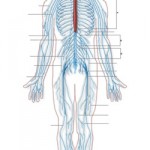I’ve had my share of problems with pain as well as with depression, but it never occurred to me to link the two until recently. Apparently, that’s true for most people with major depression, especially if physical pain is the first sign of the illness. They know they’re in pain, and depression is the last thing on their minds. A lot of primary care physicians also miss that link, and the result is that they misdiagnose depression in as many as half of these cases.
Because pain so often gets in the way of accurate diagnosis, researchers have spent a lot of time trying to figure out why. I’m especially interested in a few studies that look at how doctor and patient relate to each other and what can be done to make both more communicative and responsive.
Pain is “Real”
There’s nothing like severe pain to send someone to a doctor’s office. Over-the-counter remedies haven’t helped, and the pain is bad enough to disrupt daily life. Perhaps it’s in the lower back, perhaps it’s shooting all over, perhaps it’s a chronic problem with migraine headaches. Whatever form it might take, they want help as fast as they can get it.
They don’t have much reason to mention depression because pain is the only symptom they have, although I find that a little hard believe. I’m not sure if it means that they really don’t have any of the classic criteria – like depressed mood, loss of interest, problems concentrating, and the rest – or that they’re not aware of them, or that they don’t want to talk about emotional problems. They’re likely to regard pain as more “real” than any problem involving feelings.
Recognizing Depression
Getting to a diagnosis of depression isn’t easy when all the doctor hears about is pain, and there are several ways the process can play out in the examining room. One study describes three approaches used by doctors: “ruling out,” “opening the door” and “recognizing the person.”
-
Ruling out. Physicians are trained primarily to fit the symptoms into a medical/physical diagnosis. Since pain can be caused by a number of conditions, doctors typically go through a process of ruling out the most likely suspects. That can mean a lot of testing. When depression is involved, the results are often negative. Everything is ruled out, and there doesn’t seem to be anything wrong.
At that point, many physicians are satisfied that the pain can’t be anything serious. They might try to “normalize” the problem. That’s the term used when physicians describe the pain as falling within the acceptable range of common experience. The advice is not to worry about it. Take some painkillers if you need to, but the pain will probably go away by itself. So the depression goes undiagnosed.
-
Opening the Door. Other doctors, who understand depression, might start to talk to the patient about how they’re feeling, in other words, “open the door” to a different kind of discussion. Some people respond well to that opportunity and then bring out what’s really been going on in their lives that might be linked to the pain. But there are many who keep their inner boundaries and stop at talking about emotion.
-
Recognizing the Person. In the third approach, physicians review their overall experience with patients – “recognize the person.” If this is a first visit, there’s no prior history to consider, but if the doctor has treated the patient for some time, then it’s possible to compare their appearance and emotional tone now with those exhibited during past visits. Changes might be immediately apparent and offer a reason for the doctor to inquire further to see if depression could be involved.
I’m Not Depressed, I’m in Pain
But there might be another complication. Let’s say a doctor does diagnose depression correctly when the patient’s primary concern has been pain. When it comes to diagnosing a mood disorder in a primary care office, there’s a big question about whether the patient will accept the idea of having that sort of problem. Stigma about any sort of mental disorder is alive and well for most people.
Here’s the way one physician put it – as quoted (with a couple of minor edits for clarity) in the 2005 study, Recognition of Depression: The Primary Care Clinician’s Perspective):
I won’t force them [patients] into accepting it [depression], I mean you CAN’T! The patient has to agree, because depression is a little different in that there’s so much subjectivity to it. … I’ve had patients say, “I don’t think I have diabetes.” And I’ll say, “YES! YOU DO, because your blood sugar would not be like that unless you had diabetes. You might not feel like it, but you do.”
But … if I say, “You are depressed,” and you say, “No I’m not,” the only thing I can say is, “Well, here’s how you feel, and you’re the one who knows how you feel.” There is no real objective measure for that. It’s a subjective feeling of your emotional state. So it’s not like I can prove to somebody that they’re depressed. I can tell them that it’s my OPINION that they have a lot of
symptoms of depression and that they may be depressed, but they have to accept it.
Proposals for Better Diagnosis
Several proposals have been made to improve physician recognition of depression, primarily by educating general practitioners about the illness and encouraging early screening. Recently, researchers have broadened their thinking to include changes in the doctor-patient relationship. They emphasize the need for a more holistic approach to diagnosis that embraces several dimensions of a patient’s condition.
Here’s an example from a 2005 study outlining four key skills that physicians could work on:
-
Helping the patient to feel understood through careful listening and taking physical complaints seriously
-
Broadening the agenda of a visit to discussion of physical and psychosocial issues while showing respect for patients’ views
-
Making links to explain how physical and emotional problems may be linked
-
Exploring concerns about treatment options, including the likely side effects
That would be ideal, but it’s hard for me to imagine such wide-ranging discussions in a typical clinical setting. When I see “my” doctor, I wait in an antiseptic, windowless 10×10 box of a room. She’s under time pressure, and I know I have only a couple of minutes to get to the purpose of my appointment She’ll wrap it up in ten or fifteen minutes.
She’s brilliant, and this practice gives me the best medical care I’ve ever had. But the sort of thorough, multi-dimensional discussion envisioned in the proposal happens in a different sort of office, that of a psychiatrist or therapist. The rushed conditions of primary care aren’t likely to change enough to allow for a holistic approach. Nevertheless, I think it would be great for physicians to include interpersonal skills in their training. That would be a step forward, even if the revolution has to be postponed.
Image Some rights reserved by Dendroica Cerulea at Flickr



Great information about how to recognize depression and the importance of diagnosis. Keep it up.
I know people who suffer from depression. It’s hard to see them and not be able to help. In the end, all you can do is support them in any way you can.